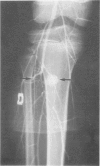Abstract
During 1982, 312 patients with 408 vascular injuries and 48 cardiac injuries were seen. Two or more vascular or cardiac injuries were present in 34% of patients. Over 87% of injuries were secondary to gunshot wounds, stab wounds, or shotgun wounds. Vascular injuries were most commonly seen in the extremities (39.9%) or abdomen (31.9%). The most common arterial injuries occurred in the brachial artery (39 patients), while the most common venous injuries occurred in the internal jugular vein (26 patients). Arterial injuries were treated by the insertion of substitute vascular conduits (33.9%), ligation (22.6%), lateral arteriorrhaphy (18.6%), or end-to-end anastomosis (15.4%). Venous injuries were treated by lateral venorrhaphy (63.7%) or ligation (25.1%). In the 272 patients admitted with only vascular injuries, survival was 84.2%. Cardiac injuries in 38 patients most commonly occurred in the right ventricle (50%) and right atrium (25%). In the 34 patients who had only cardiac injuries and less than 4 minutes of prehospital cardiopulmonary arrest prior to arrival in the emergency center, survival was 64.7%.
Full text
PDF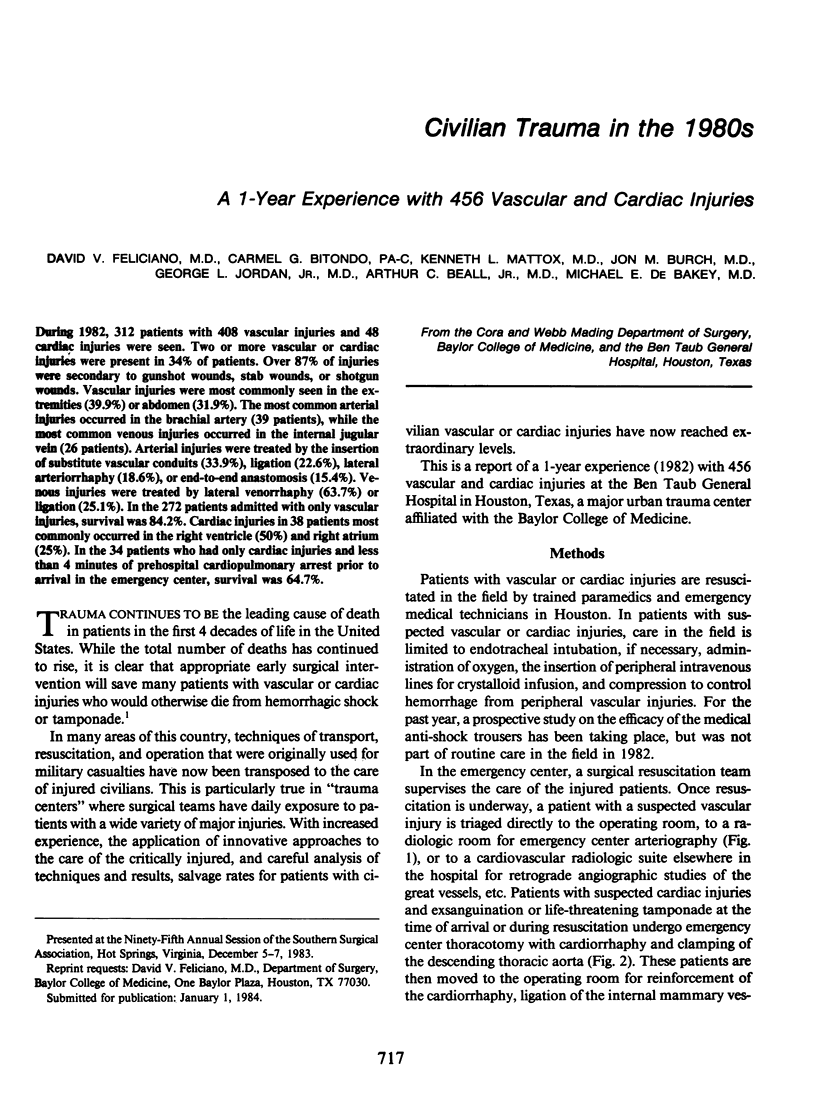
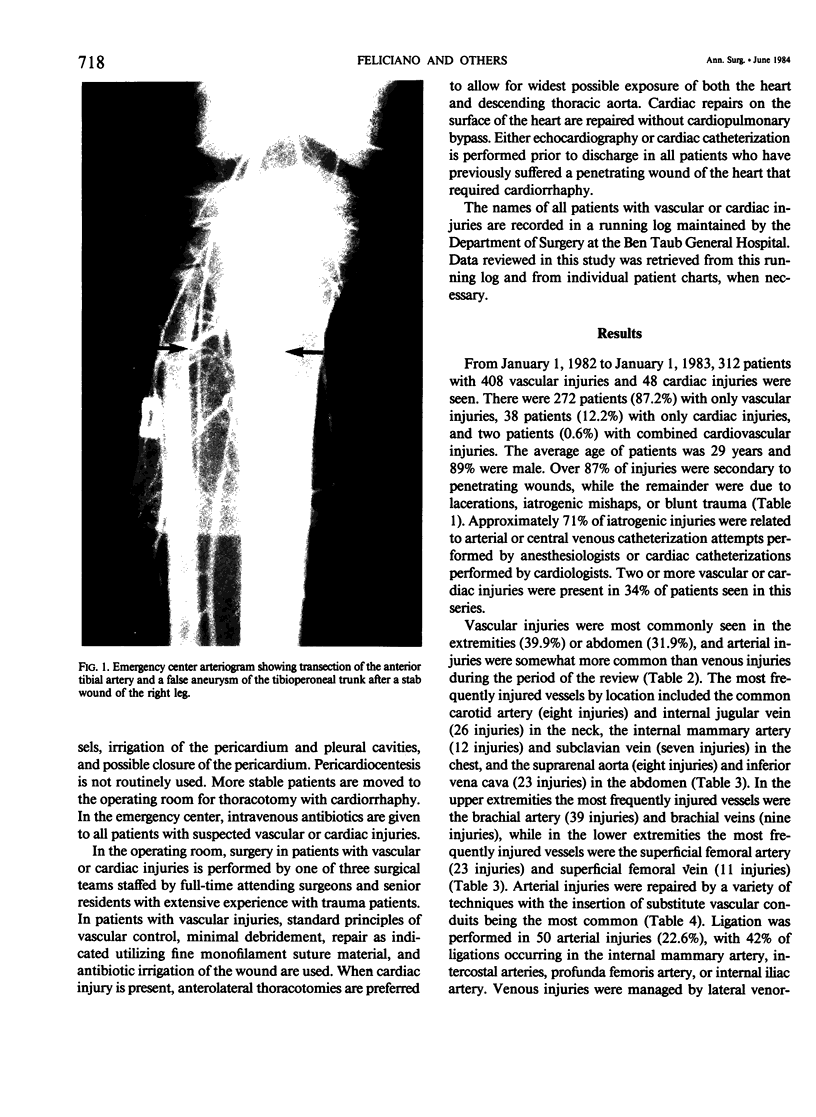
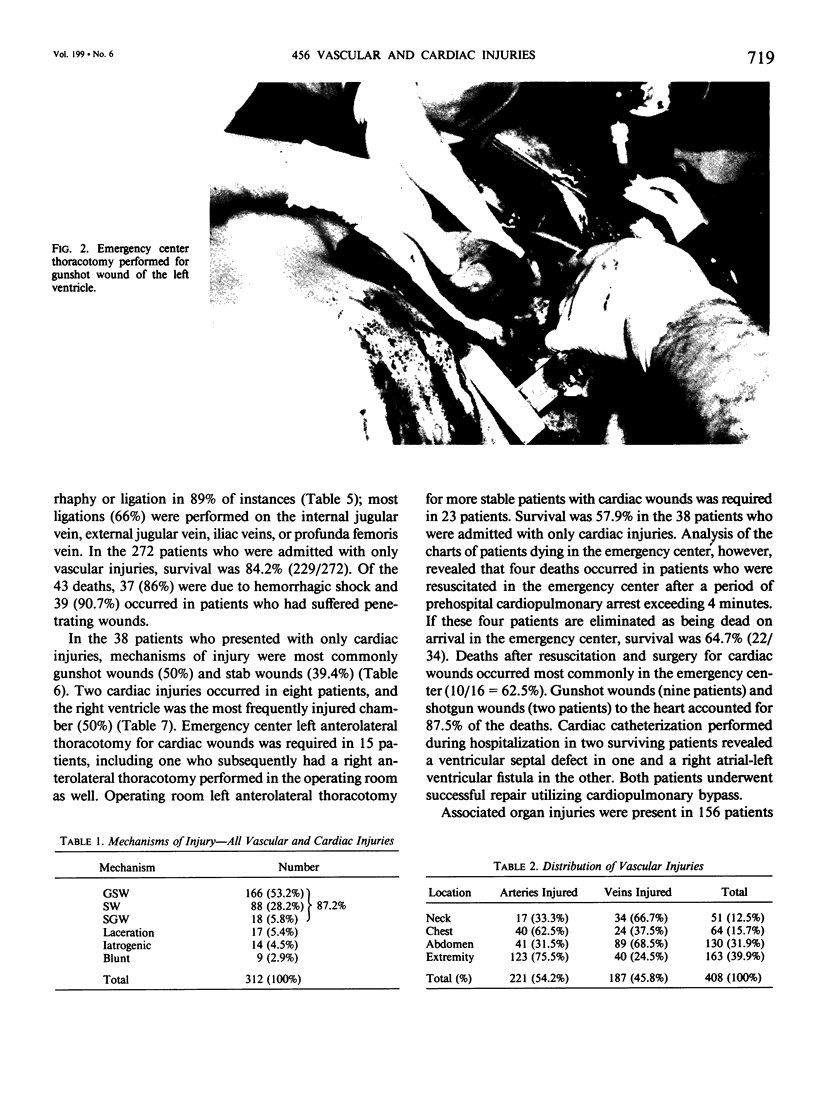
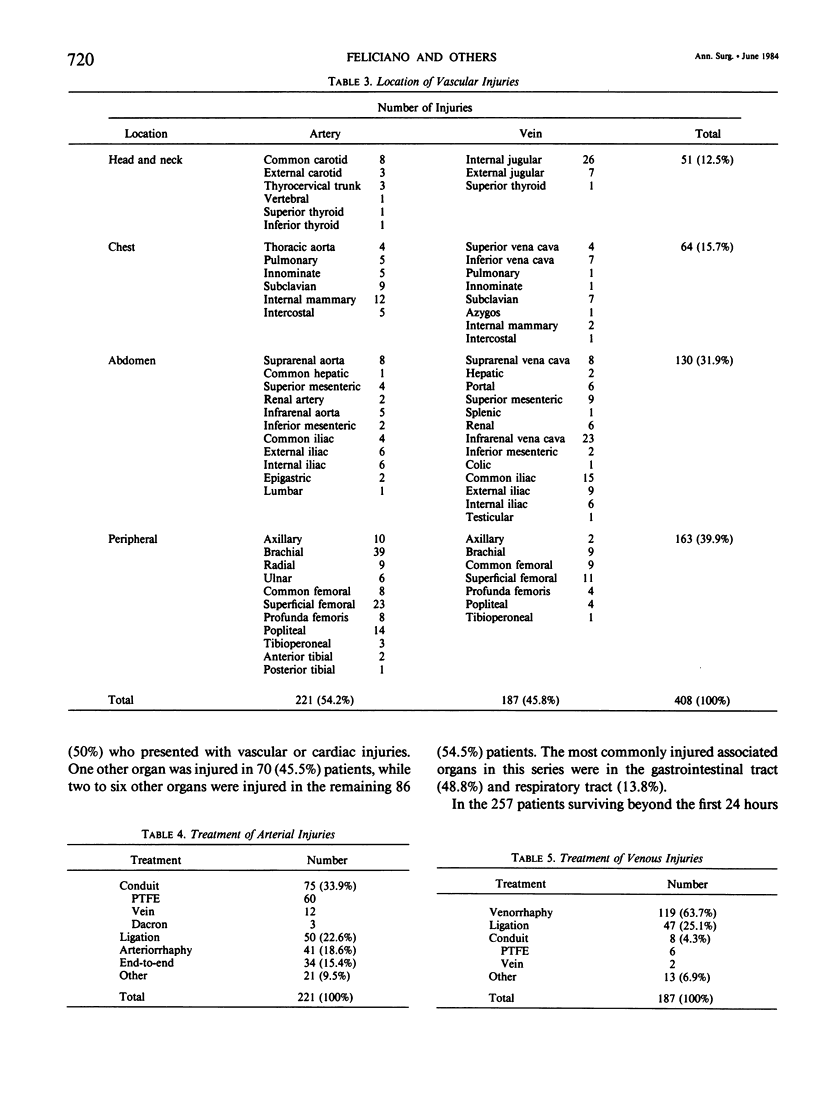
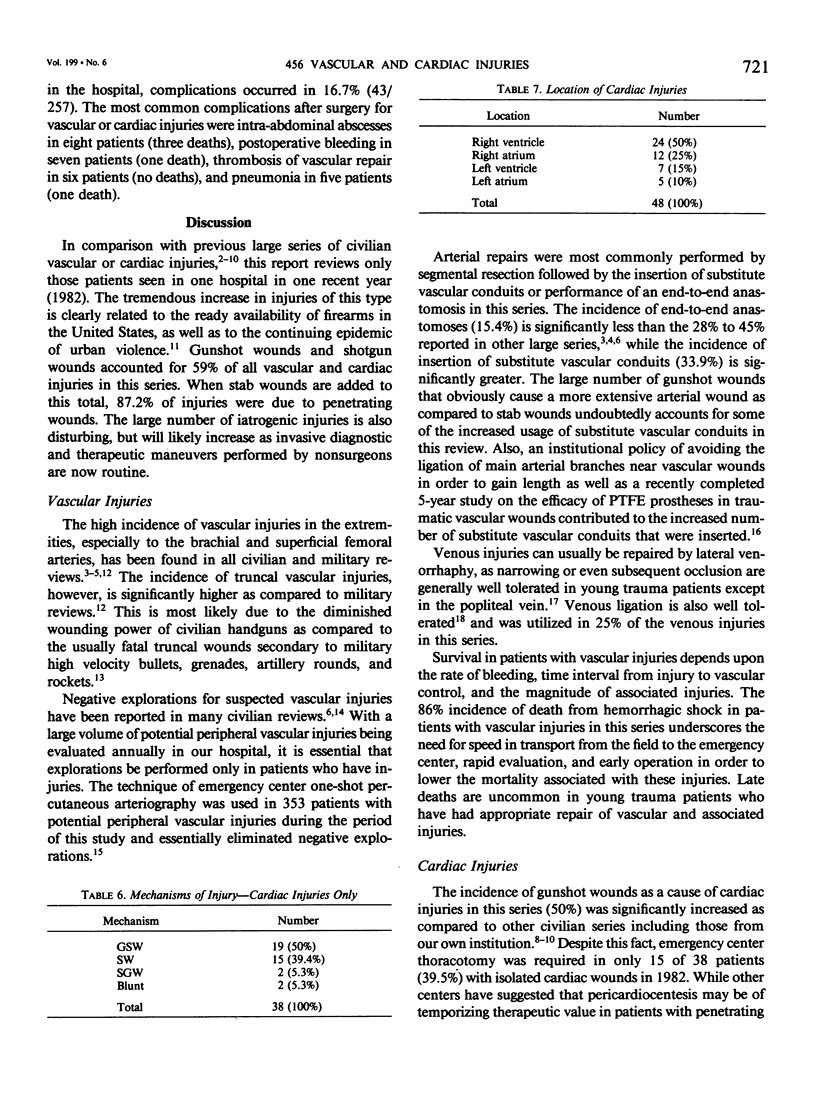
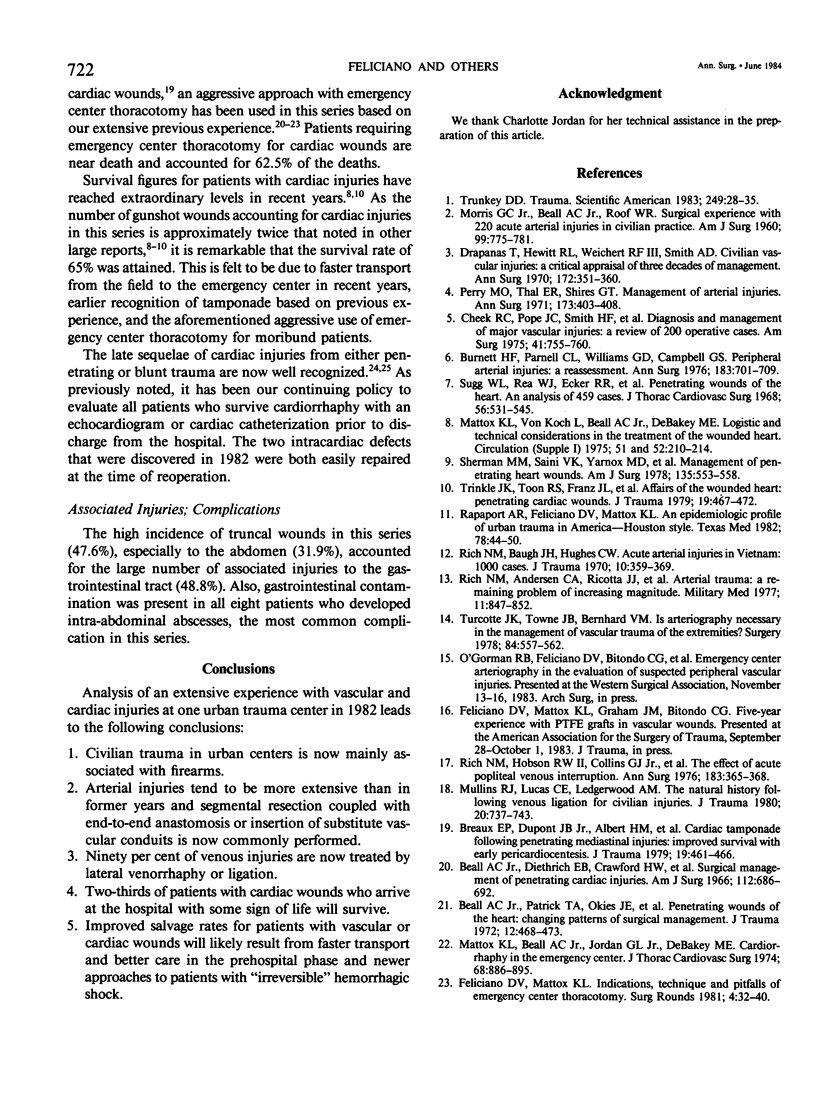
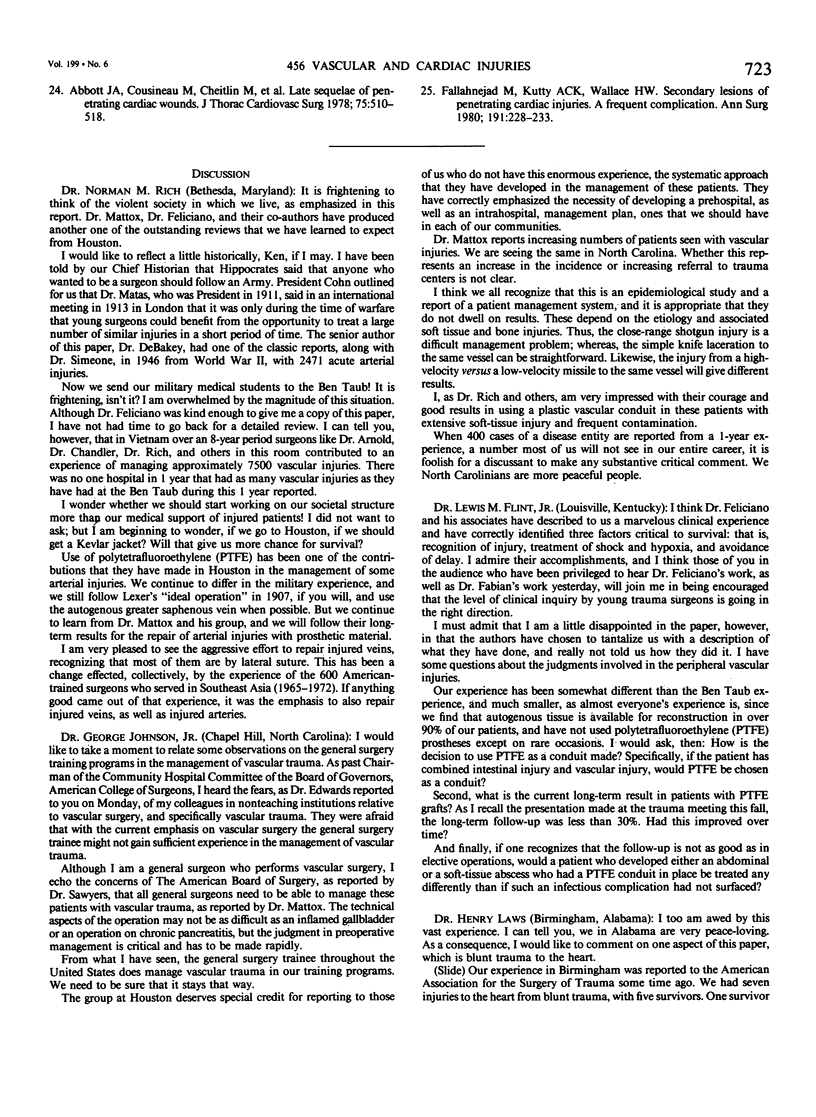
Images in this article
Selected References
These references are in PubMed. This may not be the complete list of references from this article.
- Abbott J. A., Cousineau M., Cheitlin M., Thomas A. N., Lim R. C., Jr Late sequelae of penetrating cardiac wounds. J Thorac Cardiovasc Surg. 1978 Apr;75(4):510–518. [PubMed] [Google Scholar]
- Beall A. C., Jr, Diethrich E. B., Crawford H. W., Cooley D. A., De Bakey M. E. Surgical management of penetrating cardiac injuries. Am J Surg. 1966 Nov;112(5):686–692. doi: 10.1016/0002-9610(66)90105-x. [DOI] [PubMed] [Google Scholar]
- Beall A. C., Jr, Patrick T. A., Okies J. E., Bricker D. L., DeBakey M. E. Penetrating wounds of the heart: changing patterns of surgical management. J Trauma. 1972 Jun;12(6):468–473. doi: 10.1097/00005373-197206000-00003. [DOI] [PubMed] [Google Scholar]
- Breaux E. P., Dupont J. B., Jr, Albert H. M., Bryant L. R., Schechter F. G. Cardiac tamponade following penetrating mediastinal injuries: improved survival with early pericardiocentesis. J Trauma. 1979 Jun;19(6):461–466. doi: 10.1097/00005373-197906000-00008. [DOI] [PubMed] [Google Scholar]
- Burnett H. F., Parnell C. L., Williams G. D., Campbell G. S. Peripheral arterial injuries: a reassessment. Ann Surg. 1976 Jun;183(6):701–709. doi: 10.1097/00000658-197606000-00014. [DOI] [PMC free article] [PubMed] [Google Scholar]
- Cheek R. C., Pope J. C., Smith H. F., Britt L. G., Pate J. W. Diagnosis and management of major vascular injuries: a review of 200 operative cases. Am Surg. 1975 Dec;41(12):755–760. [PubMed] [Google Scholar]
- Drapanas T., Hewitt R. L., Weichert R. F., 3rd, Smith A. D. Civilian vascular injuries: a critical appraisal of three decades of management. Ann Surg. 1970 Sep;172(3):351–360. doi: 10.1097/00000658-197009000-00005. [DOI] [PMC free article] [PubMed] [Google Scholar]
- Fallahnejad M., Kutty A. C., Wallace H. W. Secondary lesions of penetrating cardiac injuries: a frequent complication. Ann Surg. 1980 Feb;191(2):228–233. doi: 10.1097/00000658-198002000-00016. [DOI] [PMC free article] [PubMed] [Google Scholar]
- Mattox K. L., Beall A. C., Jr, Jordan G. L., Jr, De Bakey M. E. Cardiorrhaphy in the emergency center. J Thorac Cardiovasc Surg. 1974 Dec;68(6):886–895. [PubMed] [Google Scholar]
- Mullins R. J., Lucas C. E., Ledgerwood A. M. The natural history following venous ligation for civilian injuries. J Trauma. 1980 Sep;20(9):737–743. doi: 10.1097/00005373-198009000-00005. [DOI] [PubMed] [Google Scholar]
- Perry M. O., Thal E. R., Shires G. T. Management of arterial injuries. Ann Surg. 1971 Mar;173(3):403–408. doi: 10.1097/00000658-197103000-00011. [DOI] [PMC free article] [PubMed] [Google Scholar]
- Rapaport A., Feliciano D. V., Mattox K. L. An epidemiologic profile of urban trauma in America--Houston style. Tex Med. 1982 Dec;78(12):44–50. [PubMed] [Google Scholar]
- Rich N. M., Andersen C. A., Ricotta J. J., Collins G. J., Jr, McDonald P. T. Arterial trauma: a remaining problem of increasing magnitude. Mil Med. 1977 Nov;142(11):847–852. [PubMed] [Google Scholar]
- Rich N. M., Baugh J. H., Hughes C. W. Acute arterial injuries in Vietnam: 1,000 cases. J Trauma. 1970 May;10(5):359–369. doi: 10.1097/00005373-197005000-00001. [DOI] [PubMed] [Google Scholar]
- Rich N. M., Hobson R. W., Collins G. J., Jr, Andersen C. A. The effect of acute popliteal venous interruption. Ann Surg. 1976 Apr;183(4):365–368. doi: 10.1097/00000658-197604000-00006. [DOI] [PMC free article] [PubMed] [Google Scholar]
- Sherman M. M., Saini V. K., Yarnoz M. D., Ramp J., Williams L. F., Berger R. L. Management of penetrating heart wounds. Am J Surg. 1978 Apr;135(4):553–558. doi: 10.1016/0002-9610(78)90036-3. [DOI] [PubMed] [Google Scholar]
- Sugg W. L., Rea W. J., Ecker R. R., Webb W. R., Rose E. F., Shaw R. R. Penetrating wounds of the heart. An analysis of 459 cases. J Thorac Cardiovasc Surg. 1968 Oct;56(4):531–545. [PubMed] [Google Scholar]
- Trinkle J. K., Toon R. S., Franz J. L., Arom K. V., Grover F. L. Affairs of the wounded heart: penetrating cardiac wounds. J Trauma. 1979 Jun;19(6):467–472. doi: 10.1097/00005373-197906000-00009. [DOI] [PubMed] [Google Scholar]
- Trunkey D. D. Trauma. Accidental and intentional injuries account for more years of life lost in the U.S. than cancer and heart disease. Among the prescribed remedies are improved preventive efforts, speedier surgery and further research. Sci Am. 1983 Aug;249(2):28–35. [PubMed] [Google Scholar]
- Turcotte J. K., Towne J. B., Bernhard V. M. Is arteriography necessary in the management of vascular trauma of the extremities? Surgery. 1978 Oct;84(4):557–562. [PubMed] [Google Scholar]



